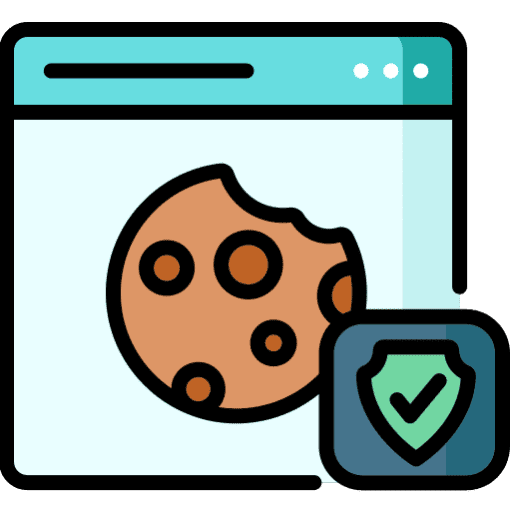Ah, time management—the elusive, yet utterly crucial element that separates the great from the merely good. But what exactly is time management?
At its most basic level, time management is merely the act of organizing and planning how to divide your time between specific activities. It's about consciously controlling the amount of time spent on various tasks in order to increase efficiency or productivity.
However, that rudimentary explanation hardly does justice to the sweeping power of effective time management. In reality, it’s much more than just a productivity booster—it's a lifestyle.
It's about making thoughtful decisions on what you invest your precious seconds, minutes and hours in. But why does all this matter?
After all, we’ve all managed fine without meticulously plotting out every second of our day so far—haven’t we? Well dear reader, allow me to shed some light on that as we delve deeper into this intriguing world of chronos and kairos.
Why Your Watch Wields Power: The Importance of Effective Time Management
The importance of effective time management cannot be overstated—it molds not only our professional lives but seeps into every facet of our personal experiences as well. Imagine being able to accomplish more in less hours without feeling overwhelmed or burnt out. Sounds like a dream doesn't it?
But that’s precisely what good time management skills can bestow upon you—a dream-like state where goals are achieved with less stress and more satisfaction. Moreover, it shapes your life in ways beyond better work output or hitting deadlines.
When you manage your time effectively, you're better able to make space for those things truly important – be it spending quality moments with loved ones or pursuing passions outside work. Not only can good time management improve your productivity and reduce stress levels; it also leads to better decision-making skills and less time wasted on unnecessary tasks.
And in this era of distraction, where a bright screen or a buzzing phone can whisk away hours in a blink, managing your time efficiently is indeed the secret weapon that can get you ahead. But how does one go about becoming a maestro at time management?
As with every art form, it begins with understanding the basics and then refining those skills over time. So let us embark on this journey of unraveling the secrets of successful time management together.
Understanding the Concept of Time
Perception of Time: It's All in Your Head
Time, as we perceive it, is a fascinating concept. Our experience of time can often feel subjective and fluid, rather than concrete and universally constant.
Ever noticed how time flies when you're engrossed in an enthralling novel or a gripping movie? Conversely, a single moment can seem to drag on forever when you're stuck in traffic or waiting for Friday evening to arrive.
This is due to our perception of time being heavily influenced by our emotions, attention, and the activities we engage in. The human brain doesn't follow an accurate clock; it adjusts our perception of time based on various factors.
If we’re excited about something tomorrow, it may seem like forever before that day arrives—yet looking back afterward, it feels like the wait was short. This phenomenon is known as ‘time dilation' and ‘time contraction'.
Fascinatingly enough, both these experiences exist purely within our minds. A keen awareness of this perceptual oddity can be immensely beneficial to managing your personal time effectively.
By understanding how our brains manipulate our sense of time based on interest levels and emotional states, we can leverage this knowledge to make tasks more engaging and consequently appear less daunting or tedious. In other words – control your perception, control your time!
Manipulate your mind into making boring tasks interesting by incorporating elements you enjoy or transforming them into games – ever tried ‘gamified’ cleaning? Suddenly that ticking clock seems a lot less threatening!
Chronemics: When Timing Is Everything
Moving onto a rather intriguing facet of communication – Chronemics. The term refers to the study of how time affects communication and consequently influences social norms and expectations. Understanding chronemics can greatly enhance one's communication skills, ensuring we say the right things at the right time.
The concept of chronemics extends to various aspects of communication – from response times in a conversation to punctuality and allocation of time. Responding quickly to an email, showing up on time for meetings or dates, or even giving someone your undivided attention during a discussion are all elements that reflect respect and value for others' time.
They communicate volumes about your personal or professional ethics. Incorporating an understanding of chronemics into your life can drastically improve your interpersonal relationships and professional demeanor.
It sets expectations for respectful and efficient interaction, ensuring you're perceived as reliable and considerate. Think about it – how much more do you respect a person who values your time as much as their own?
Embracing chronemics is a significant stride towards effective time management. After all, managing our own time is one thing but respecting others' time is what truly completes the circle of successful human interaction.
The Art and Science of Setting Goals
Breathing Life into Your Aspirations
Goals are like the compass leading us toward our desired destination in life. They add meaning and purpose to our existence, becoming a powerful motivator for us to overcome the hurdles that often obstruct our path. The process of setting goals is both an art and a science – it involves creativity, foresight, planning, and a systematic approach.
The art of goal-setting lies in understanding oneself – identifying one's passions, strengths, weaknesses, desires, and fears. It requires introspection to visualize clear objectives that align with personal values and aspirations.
Just as an artist paints on canvas with reverie-filled strokes or a poet weaves words into heart-stirring verses – setting goals is about connecting with your deepest self to bring forth your life’s masterpiece. On the other hand, the science of goal-setting involves methodical tasks: breaking down large goals into manageable chunks or steps; estimating time frames; reassessing progress; adjusting strategies when necessary.
This analytic process ensures the feasibility of your goals while providing you with measurable parameters for success. Ultimately, effective goal setting marries these two elements – combining introspective self-understanding with meticulous planning—to foster substantial personal growth and achievement.
SMART Goals: Making Your Dreams a Reality
A Practical Guide to Dream Fulfillment
Now let's delve into SMART goals—an acronym standing for Specific, Measurable, Achievable, Relevant and Time-bound-and how they can transform vague ambitions into tangible realities. This model serves as a reliable blueprint for creating effective plans.
Starting with Specificity—you need to be precise about what you aim to achieve. A vague ambition such as “I want to get fit” morphs into “I will run 5 miles without stopping”.
By being specific you create clarity and direction, eliminating nebulous thinking. Next, Measurable goals involve setting clear criteria for tracking progress.
Using the above example, you could break it down further by stating “I will add half a mile to my running distance every week”. This enables you to quantify your advancement and maintain motivation.
Achievable goals are grounded in reality, pushing us to stretch our capabilities while remaining within our reach. If you've never run before, setting a goal to be marathon-ready in a month is unrealistic.
Start with what's doable and upscale gradually. Relevance is ensuring that your goals align with your broader life objectives and values.
If health is a priority but you hate running, perhaps yoga or swimming would be more appropriate fitness goals. Time-bound means attaching deadlines to your aspirations.
This creates urgency that propels action while allowing for clear evaluation of progress—like committing to achieve the 5-mile run within 3 months. The SMART framework thus provides concrete steps towards achieving dreams – one incremental milestone at a time.
Long-Term vs Short-Term Goals: The Big Picture and Small Steps
Mapping Your Journey from Dreamland to Reality
Yet importantly, let's discuss long-term versus short-term goals—a crucial dichotomy in effective goal planning. Long-term goals are akin to the horizon we're sailing towards—the ultimate objectives we wish to accomplish over years or even decades such as establishing our own business or retiring early.
However, these monumental targets can feel daunting—like vast mountains looming in the distance. That's where short-term goals come into play—they are the stepping stones that lead us across the river of ambition towards those monumental peaks.
These might include saving a specific amount each month (for early retirement) or taking up an entrepreneurship course (for starting that business). This interplay between long-term and short-term objectives imparts structure on our journey towards self-actualization.
It ensures that each day, week, and month we are taking deliberate strides towards fulfilling our dreams. Furthermore, it helps maintain motivation as we not only see the distant peak but also feel the joy of overcoming smaller hurdles along the way.
Setting goals is more than a task—it's an art of crafting your life's narrative and a science that transforms those visions into reality. By utilizing SMART principles and understanding the dynamics of long-term and short-term objectives, you can steer your ship confidently toward your desired horizon.
Tools for Managing Your Time Effectively
The mastery of time management depends heavily on one's ability to harness both existing and innovative tools that foster productivity. These instruments, ranging from traditional to digital, serve as extensions of our cognitive processes – assisting us in organizing our schedules, setting reminders, prioritizing tasks, and even tracking our progress. Herein lies the key to unraveling the equation of efficient time management: pairing your goals with the appropriate tools.
The Trustworthy Trio: Planners, Calendars, and Clocks
Let's start with the basics: planners, calendars and clocks – these stalwarts of organization have been around for centuries yet they remain relevant even in today's digital age. The tactile satisfaction of writing down events in a planner or setting an alarm clock is a tried-and-true method for those who prefer physical reminders over electronic pings. A well-utilized planner offers much more than just a list of daily tasks.
It allows you to visually map out your week or month ahead; giving you a bird’s eye view on your schedule and helping you identify potential overlaps or free slots where you can shuffle tasks around. It also gives room for flexibility – tasks can be crossed out or shifted without fighting with overly complicated digital systems.
Calendars offer similar benefits but are more suited for planning long-term activities or monitoring recurring events – birthdays, anniversaries or yearly check-ups are typically recorded here. Clocks remind us not only about our appointments but also help us keep track of the minutes ticking away – an effective strategy in curbing procrastination and ensuring we stick to allocated task times.
In essence, these traditional tools serve as constant physical reminders – silently yet forcefully nudging us toward our goal-oriented activities. There is something empowering about owning your day by consciously interacting with these instruments and manually plotting out your life’s events.
Embracing the Future: Digital Tools to The Rescue
As we transition into a more tech-savvy era, digital tools have emerged as remarkable assistants in our journey toward effective time management. Loaded with features that allow us to manage our time efficiently, the plethora of apps and software available today have revolutionized the way we plan and organize our lives. Calendar apps like Google Calendar or Outlook sync across multiple devices allowing you to access your schedule anytime, anywhere.
Task management apps such as Asana or Trello offer collaborative spaces for both personal projects and team tasks – these are especially useful in managing hefty workloads by breaking them down into manageable chunks. Time-tracking softwares like RescueTime give detailed reports on how you spend your digital time, helping you identify where you can cut back.
In addition to this, numerous productivity apps incorporate techniques like the Pomodoro method where work is broken up into intervals separated by short breaks; thereby increasing productivity without leading to burnout. Habits trackers encourage consistency in maintaining good habits while some even make it fun – gamifying everyday duties making them less of a chore.
The obvious advantage of these digital tools lies not only in their convenience but also in their ability to provide analytical insight into our routines – enabling us to see patterns, assess progress and adjust accordingly. They serve as dynamic mirrors reflecting our daily habits – encouraging us towards constant self-improvement.
Strategies for Better Time Management: Winning the Battle Against the Clock
The art of time management is an intricate dance of planning, sequencing and executing. It requires deft footwork and adroit maneuvering.
But fret not! Here are two essential strategies to help you gracefully pirouette your way through this ballet of time.
The first strategy takes a page from Sun Tzu's ‘Art of War' – knowing when to fight your battles. Or in this case, prioritizing which tasks are worth battling against the clock for.
The second strategy is learning how to delegate – know when to pass the baton and trust someone else with it. Together, these strategies can revolutionize your management of time.
Prioritization Techniques: Deciding What Matters Most
So, let's begin with prioritization – the process of determining what tasks require immediate attention, which ones can wait, and which are simply unnecessary to tackle at all. For many people, every task feels like a priority one task! And that’s where a handy tool called the Eisenhower Matrix comes in.
This technique divides tasks into four quadrants based on their urgency and importance: do (important and urgent), plan (important but not urgent), delegate (urgent but not important), and eliminate (neither important nor urgent). By categorizing tasks this way, you get a clear picture of where your immediate focus should be.
Beyond this matrix lies the realm of Pareto’s Principle or the 80/20 rule as it's fondly known – implying that 80% of the results come from 20% efforts. Identifying that crucial 20% is key to effective prioritization.
It truly allows you to focus on what matters most – bringing big gains with small efforts! And then there's the ABCDE prioritization technique that ranks tasks from A (highest priority) to E (lowest priority).
You only move to B when you're done with all A's and so on. This method puts you in the driver's seat, steering your day instead of being driven by it.
Delegation Skills: Sharing is Caring (and Efficient!)
Moving on to our second strategy – delegation. It might seem scary to hand off important tasks to others, but trust me, it can be one of the most liberating and efficient decisions you make.
The key is knowing what to delegate and identifying who is best equipped to handle it. A good rule of thumb is delegating tasks that are time-consuming but do not require your specific expertise.
These could be administrative duties or routine chores that take away valuable time from high-priority projects. Remember – delegation isn’t shirking responsibilities – rather it’s about working smarter!
Now, remember the ‘delegate' quadrant in the Eisenhower Matrix we talked about? Those tasks fit perfectly into your delegation list!
And hey, don’t forget to delegate with clear instructions, performance expectations and a deadline – because ambiguity breeds inefficiency. Effective delegation relies on trust.
Entrust your team or family members with responsibility and watch them rise up to the challenge! It’s a win-win situation – they learn new skills, and gain confidence – while you get more breathing room for high-stakes tasks.
Overcoming Procrastination – The Silent Killer of Productivity
The Arch-Nemesis in Disguise: Unraveling the Psychology Behind Procrastination
First, let's gain some insight into this enigmatic adversary. Procrastination is not simply an act of laziness; it's a complex psychological phenomenon that everyone grapples with to varying degrees.
This habitual or intentional delay of starting or finishing tasks, despite their negative consequences, can be attributed to different factors. One factor is the fear of failure.
Often, we procrastinate because we're afraid that our efforts won't measure up to our standards or those set by others. Perfectionists are especially susceptible here – they tend to interpret any failure as a catastrophic event.
Another psychological aspect underlying procrastination is the lack of self-control. Many theorists argue that procrastinators have less ability to control impulsive behavior and resort easily to distractions instead of facing challenging tasks.
Furthermore, there's an element of denial or avoidance at play; we tend to push away burdensome responsibilities not realizing that time isn't going anywhere – and neither are those tasks. Another facet worth pondering upon is our innate preference for instant gratification over delayed rewards—a phenomenon psychologists term as “present bias.” It's much easier for us humans with our fallible willpower and fleeting attention spans to focus on immediate pleasures rather than long-term gains.
Breaking Free from Shackles: Tips to Kick the Habit
Now that we've inspected why we fall into this pitfall called procrastination let's delve into practical tips for overcoming it and freeing ourselves from its grasp. You'll notice none of these involve acquiring superhuman discipline or turning into a productivity robot overnight – because sustainable change begins small and gradually builds up.
One effective strategy against procrastination is breaking down larger tasks into smaller, manageable sub-tasks. This makes the overall task seem less overwhelming and more approachable.
Remember, Rome wasn't built in a day—a step at a time can lead to a thousand miles. Next is to employ the “2-Minute Rule”.
If it takes less than two minutes, do it now. Not later, not after lunch – now.
This rule is remarkably effective at clearing small tasks that clutter your mind and eat up your mental bandwidth. Thirdly, use a visual progress marker like checklists or progress bars.
Our brains love the dopamine hit we get when we see visible evidence of our progress, making us more likely to want to continue with the task. Cultivate self-compassion.
Don't beat yourself up over procrastination; everyone does it sometimes! Instead of being harsh on yourself for past procrastination instances, focus on creating an environment that encourages productivity moving forward.
Remember that overcoming procrastination is not about achieving perfection—it's about making consistent efforts towards improvement. With these tips up your sleeve and a compassionate mindset to guide you through setbacks, you're well on your way towards slaying this productivity leech for good.
Time Blocking – Allocating Your Hours Wisely
The Nitty-Gritty of Time Blocking
Time blocking, as the name suggests, is a time management technique where you literally block out specific chunks of your day to accomplish certain tasks. The concept is akin to setting appointments with yourself to meet your own deadlines and goals. It's not just about getting things done but also about ensuring you are spending your most valuable resource – time – in alignment with your priorities.
This strategy involves organizing your day into segments or blocks of time, each dedicated to a specific task or activity. This might be time spent on work projects, personal development activities, leisure or even mundane tasks like laundry and grocery shopping.
By assigning specific tasks to these blocks, you ensure that everything necessary gets its designated place in your schedule. The beauty of time blocking lies in its simplicity and flexibility.
It can be tailored according to one's individual needs and commitments. But more importantly, it fosters a sense of control over one's schedule rather than letting the day dictate terms.
Color Coding Your Calendar: Practical Steps to Implement Time Blocking
To start implementing this method in daily life, begin by listing down all the activities and assignments that demand your attention during the week. Then estimate how much time each task will require; be realistic and leave room for contingencies.
Next comes the fun part – grabbing your calendar tool (be it digital or traditional) and creating blocks for these tasks throughout your week. Start by assigning fixed blocks for non-negotiables like sleep hours, meal times, etc., followed by priority tasks that are essential for achieving key goals.
To make this process easier and visually engaging, consider color-coding different types of tasks or activities on your calendar; red for high-priority work-related tasks, green for personal development activities like reading or exercising; blue for relaxation and leisure time, and so on. Remember, the aim of this method is not to cram as much work into your day as possible but instead, to create a balanced schedule that accommodates all aspects of life.
It's all about working smarter and not harder. And don't forget to include some buffer time between blocks for mental rest and unexpected occurrences.
Ensure you review and adjust your blocks as needed at the end of each day or week. It’s a dynamic process that encourages continuous improvement in how you manage your time.
By becoming intentional about how we spend our hours, we gain the opportunity to make meaningful progress toward our most cherished goals. Time blocking may appear rigorous initially but over time it can prove instrumental in enhancing productivity while reducing stress levels.
So why not give it a shot? After all, mastering our time is tantamount to mastering our lives.
Time Management in Different Life Spheres
Work-Life Balance – The Delicate Dance on the Tightrope of Time
In the intricately choreographed ballet of life, work-life balance often seems like a solo number with an insurmountable level of difficulty. The contemporary world demands us to perform at our peak in our professional lives without missing a beat in our personal realms. The key, as it so happens, lies not in perfecting every pirouette but in prioritizing your performance.
It's about discerning which tasks require your full attention and effort and recognizing those that can be delegated or deferred. It also requires understanding that achieving balance does not mean dedicating an equal number of hours to work and life but finding quality time for both.
Another important aspect is setting boundaries and respecting them diligently. In the age of digital technology, it's all too easy for work to seep into personal time, making it crucial to establish strict demarcations between the two spheres.
Remember that this balancing act is not a one-time routine; instead, it’s an ongoing process that requires constant tweaking and adjusting. Changes in career stages or personal circumstances often call for reevaluation and rearrangement of your dance steps around the tightrope.
Student Life – The Juggling Act: Studies, Sleep, Socializing
It’s no easy task being a student! You're thrown into an arena where you’re expected to juggle academics with sleep all while maintaining an active social life – sounds like quite a herculean endeavor.
Begin by accepting that you cannot do everything simultaneously – prioritize! Determine what needs your immediate attention (exams?
projects?) vs what can wait (that new series on Netflix). Ensure that academics receive due focus without allowing them to consume all your waking hours.
Sleep might seem like an expendable luxury when deadlines loom, but remember, a well-rested mind is more productive than a sleep-deprived one. Strategize your study schedule to allow ample time for rest.
A regular sleep pattern can work wonders for your health, focus, and overall productivity! Socialization is not just about partying or hanging out aimlessly.
It's about forging meaningful connections and nurturing relationships that add value to your life. It could be as simple as participating in group studies, engaging in club activities or volunteering.
Don’t forget to take some time out for yourself – because self-care is not selfish! Whether it's a relaxing hour of reading or a quick yoga session, taking care of your mental and physical health will ensure you keep juggling all the aspects of student life with aplomb.
Coping with Unexpected Interruptions & Distractions
The Digital Dilemma: Reducing Screen-Time Snags
In today's technologically charged world, digital distractions are ubiquitous. These electronic interlopers are often disguised as harmless tools that subtly chip away at our productivity.
The computer pings, the phone buzzes, and before you know it, you've spent precious minutes or even hours scrolling through an endless vortex of information. Taking back control begins with awareness.
Recognizing how much time we waste on unnecessary digital activities is the first step toward decluttering our digital space. Applications like ‘RescueTime' can track how you spend your time online and provide comprehensive insights about your habits.
After understanding your usage pattern, it's time to set boundaries for yourself. Consider allocating specific blocks of time for checking emails or browsing social media, instead of continuously glancing at every notification that pops up.
‘Freedom' and ‘StayFocusd' are tools that can limit the amount of time you spend on distracting websites. Remember that it's okay to switch off sometimes.
Our brains need a respite from the incessant barrage of screen-based information now and then. Taking periodic digital detoxes not only aids in maintaining focus but also contributes to overall mental well-being.
Navigating Life's Hiccups: Dealing with Unplanned Events
Life has a knack for presenting us with unexpected events at the most inconvenient times – whether it's a sudden work emergency or an unexpected visitor dropping by unannounced. It might seem like these unplanned interruptions are out to sabotage your carefully crafted daily schedule.
However, one must remember that flexibility is a key component of effective time management – after all, rigidity in dealing with change can often lead to unnecessary stress and inefficiency. Thus, learning how to incorporate these surprises into your daily routine is crucial.
Firstly, when creating your schedule, try to leave some wiggle room for unexpected tasks. This ‘buffer' time will allow you to accommodate unforeseen events without completely disrupting your day.
Secondly, remain calm when these disruptions occur and resist the urge to panic. Overreacting can often cloud our judgment, making it harder to evaluate the situation logically and prioritize tasks effectively.
Consider each interruption as an opportunity for growth. They challenge you to adapt quickly, think on your feet and demonstrate resilience – all valuable life skills that can carry over into multiple areas of personal and professional development.
Conclusion – Embracing Productivity & Peace Through Effective Time Management
The Fruits of Our Labor: Reflecting on Lessons Learned
Over the course of exploring the multifaceted world of time management, we've uncovered a veritable treasure trove of insights. Not least is that time, that most elusive and intangible resource, is indeed within our control. We learned about how our perception of time influences our productivity, and that understanding chronemics can help us use time to our advantage.
We discovered the importance of setting goals – both big and small – and how SMART goals can bring our dreams into sharp focus. In addition to setting goals, we also examined various tools for managing our time effectively; from venerable traditional aids like planners and clocks to innovative digital apps designed to streamline processes.
In delving into strategies for better management of precious hours, we developed an appreciation for prioritization techniques as well as the art of delegation. The realization that sharing tasks isn't merely a benevolent act but an efficiency booster was indeed a revelation.
Encouragement: Cultivating Inner Tranquility Amidst Outer Chaos
One primary takeaway from this exploration is understanding that excellent time management leads not just to increased productivity but creates peace as well. When we're in control of how we allocate our hours – when distraction loses its power over us – a profound sense of calm ensues. This tranquility stems from knowing you're making meaningful progress towards your objectives while also maintaining balance in various life spheres.
While unexpected interruptions will inevitably occur, developing resilience skills ensures they don't derail plans permanently. Equipped with newfound knowledge on handling digital distractions and unforeseen events with grace will amplify your adaptive capacities manifold.
Taking the reins back in hand by dealing with procrastination head-on has been another important lesson learned during this journey. By understanding its psychological underpinnings and arming ourselves with practical tips to combat it, we are now more prepared than ever to conquer this silent killer of productivity.
Conclusion
The journey through the landscape of time management has been enlightening. It is a beautiful reminder that while time constantly moves forward, it is not an adversary but an ally. By mastering time management skills, we can harness its power for our benefit.
From nurturing dreams into reality through SMART goals to managing work-life balance with finesse – the possibilities are limitless. So as we part ways on this journey, remember that every tick-tock brings opportunity.
It's not about having time; it's about making time. Here's to a future where productivity and tranquility coexist in perfect harmony!

















